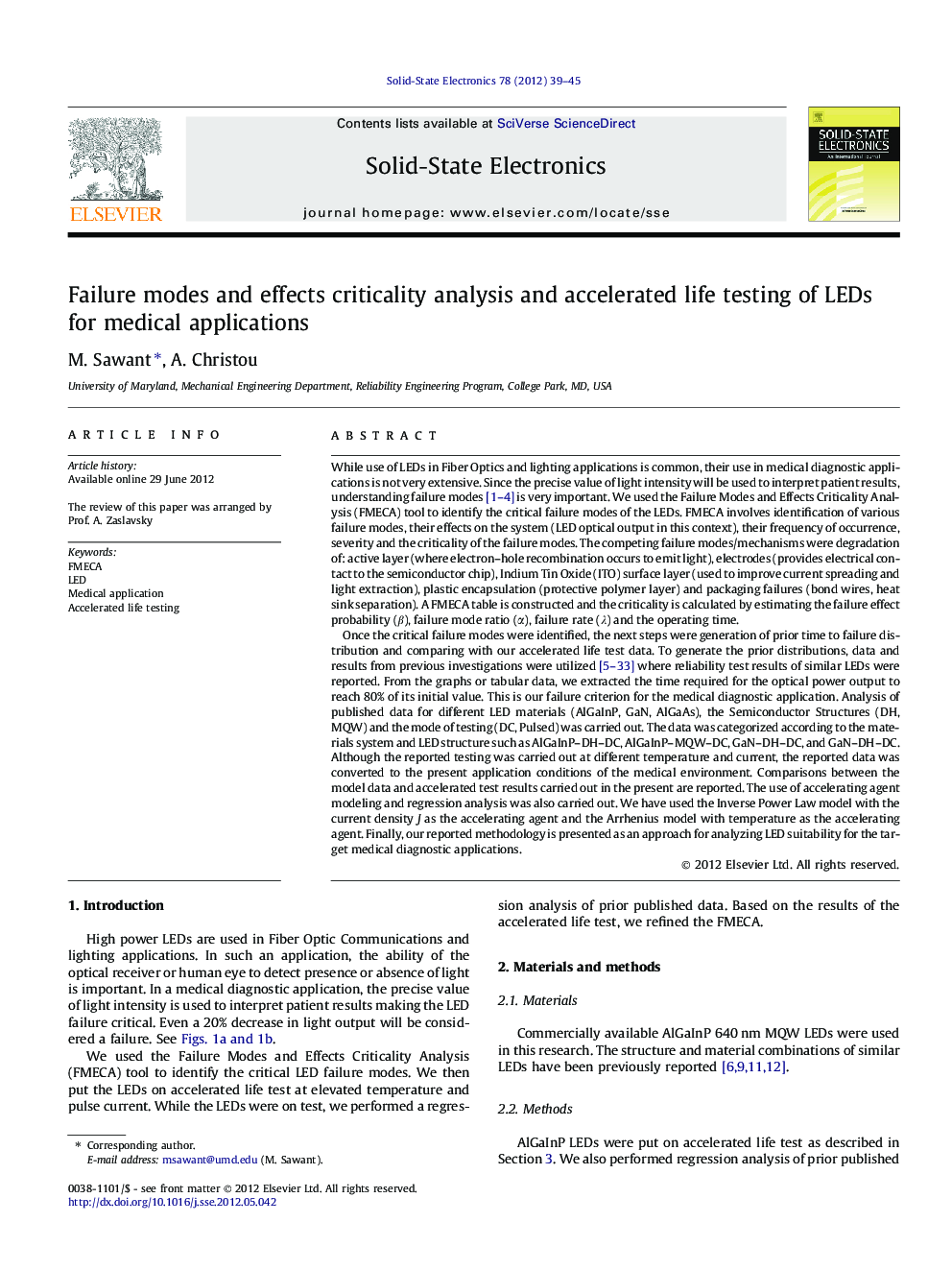| کد مقاله | کد نشریه | سال انتشار | مقاله انگلیسی | نسخه تمام متن |
|---|---|---|---|---|
| 748564 | 1462254 | 2012 | 7 صفحه PDF | دانلود رایگان |

While use of LEDs in Fiber Optics and lighting applications is common, their use in medical diagnostic applications is not very extensive. Since the precise value of light intensity will be used to interpret patient results, understanding failure modes [1], [2], [3] and [4] is very important. We used the Failure Modes and Effects Criticality Analysis (FMECA) tool to identify the critical failure modes of the LEDs. FMECA involves identification of various failure modes, their effects on the system (LED optical output in this context), their frequency of occurrence, severity and the criticality of the failure modes. The competing failure modes/mechanisms were degradation of: active layer (where electron–hole recombination occurs to emit light), electrodes (provides electrical contact to the semiconductor chip), Indium Tin Oxide (ITO) surface layer (used to improve current spreading and light extraction), plastic encapsulation (protective polymer layer) and packaging failures (bond wires, heat sink separation). A FMECA table is constructed and the criticality is calculated by estimating the failure effect probability (β), failure mode ratio (α), failure rate (λ) and the operating time.Once the critical failure modes were identified, the next steps were generation of prior time to failure distribution and comparing with our accelerated life test data. To generate the prior distributions, data and results from previous investigations were utilized [5], [6], [7], [8], [9], [10], [11], [12], [13], [14], [15], [16], [17], [18], [19], [20], [21], [22], [23], [24], [25], [26], [27], [28], [29], [30], [31], [32] and [33] where reliability test results of similar LEDs were reported. From the graphs or tabular data, we extracted the time required for the optical power output to reach 80% of its initial value. This is our failure criterion for the medical diagnostic application. Analysis of published data for different LED materials (AlGaInP, GaN, AlGaAs), the Semiconductor Structures (DH, MQW) and the mode of testing (DC, Pulsed) was carried out. The data was categorized according to the materials system and LED structure such as AlGaInP–DH–DC, AlGaInP–MQW–DC, GaN–DH–DC, and GaN–DH–DC. Although the reported testing was carried out at different temperature and current, the reported data was converted to the present application conditions of the medical environment. Comparisons between the model data and accelerated test results carried out in the present are reported. The use of accelerating agent modeling and regression analysis was also carried out. We have used the Inverse Power Law model with the current density J as the accelerating agent and the Arrhenius model with temperature as the accelerating agent. Finally, our reported methodology is presented as an approach for analyzing LED suitability for the target medical diagnostic applications.
► FMECA was used to identify critical LED failure modes in a medical application.
► Accelerated Life Testing (ALT) was performed in Burst/Pulse mode.
► Active Region and Encapsulation degradation were major failure modes.
► Inverse Power Law/Arrhenius models used for current/temperature acceleration.
► Iterative Regression analysis of prior published LED life data.
Journal: Solid-State Electronics - Volume 78, December 2012, Pages 39–45